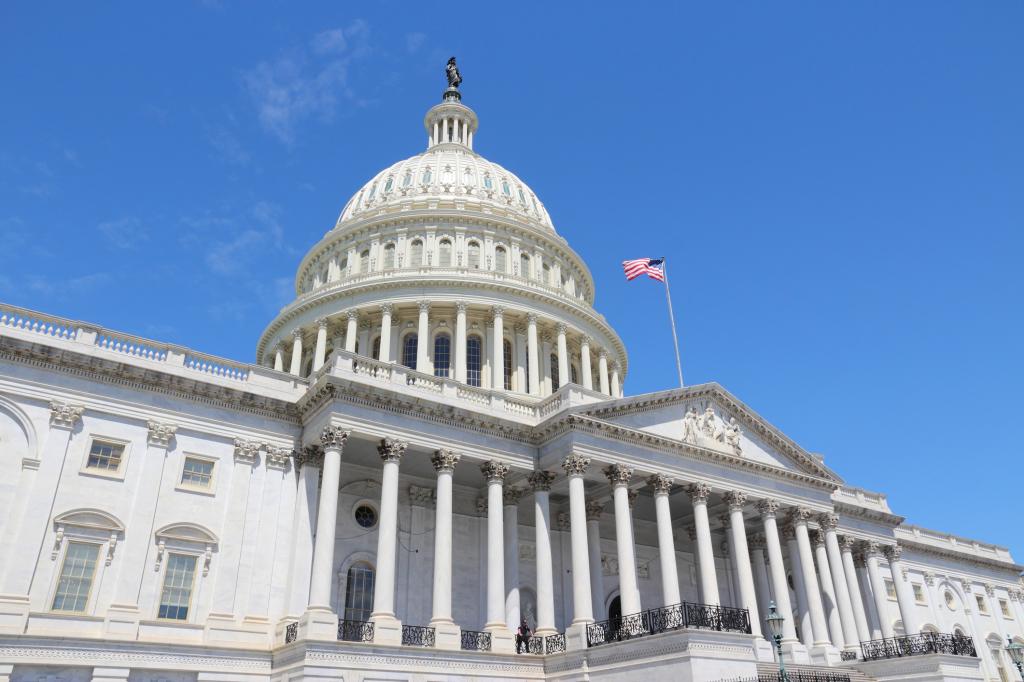House Republicans Pass Stopgap Funding Bill Amid Looming Government Shutdown Threat
In a narrow vote that underscores the current political tension in Washington, House Republicans successfully passed a stopgap funding bill on Friday as the federal government faces a potential shutdown at the end of the month. The measure squeaked through with a 217-212 vote, highlighting the razor-thin margins that often characterize today’s congressional actions. In an interesting cross-party moment, one Democrat broke ranks to join 216 Republicans in supporting the bill, while two Republican lawmakers opposed it, demonstrating that even within party lines, consensus isn’t guaranteed on matters of government funding.
The passage of this bill comes at a critical juncture as the end of the fiscal year approaches on September 30th. Without approved funding measures in place, federal agencies would be forced to cease non-essential operations, potentially affecting thousands of government employees and numerous services that Americans rely on daily. Stopgap funding bills—often called continuing resolutions—have become increasingly common in recent years as Congress struggles to complete the normal appropriations process on time. These temporary measures essentially extend current funding levels for a designated period, giving lawmakers additional time to negotiate more comprehensive spending legislation.
The close vote reflects the broader political dynamics at play in Washington, where partisan divisions make even routine governmental functions like keeping the lights on a challenging endeavor. House Speaker Mike Johnson and Republican leadership had to navigate competing interests within their own caucus—balancing the demands of fiscal conservatives who push for spending cuts against the practical necessity of keeping government operations running. The two Republican “no” votes likely came from members who either felt the measure didn’t go far enough in reducing spending or who objected to passing another temporary solution rather than addressing long-term fiscal planning.
For the lone Democrat who crossed party lines to support the measure, the vote potentially represents either a pragmatic choice to avoid a government shutdown or reflects specific provisions in the bill that benefited their district. Democratic leadership had generally opposed the Republican-crafted resolution, arguing for a “clean” funding bill without policy riders or spending cuts that might prove contentious. The next step for this legislation will be consideration in the Democratic-controlled Senate, where its fate remains uncertain as Senate Majority Leader Chuck Schumer may pursue a different funding approach.
Government shutdowns have become an increasingly familiar feature of American politics in recent decades, with significant shutdowns occurring in 1995-1996, 2013, and most recently in 2018-2019, which became the longest in U.S. history at 35 days. These funding lapses create ripple effects throughout the economy—from furloughed federal workers going without paychecks to delayed services for citizens and businesses that interact with government agencies. The prospect of another shutdown comes at a particularly challenging time as the country continues to navigate economic uncertainties, including inflation concerns and potential recession risks.
As this situation continues to develop, attention will shift to the Senate’s response and potential negotiations between the two chambers to reconcile their approaches before the end-of-month deadline. President Biden and his administration will likely become more directly involved in these discussions as the shutdown deadline approaches. The political stakes are high for both parties with the November elections approaching, as voters often assign blame for government dysfunction. Whether this stopgap measure ultimately prevents a shutdown or merely delays the confrontation remains to be seen, but what’s clear is that the fundamental challenges of governance in a divided Washington continue to complicate even the basic functions of keeping the government operational.











